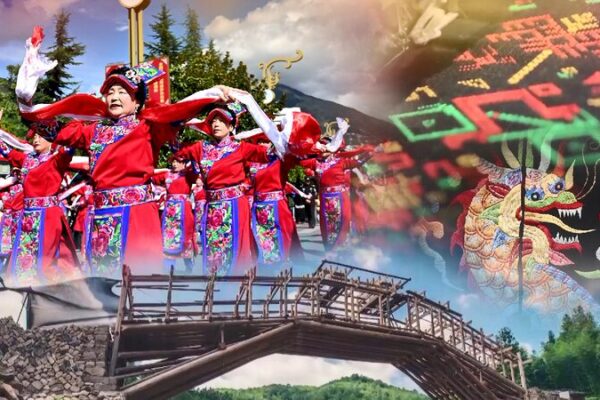UNESCO Recognizes Three Chinese Cultural Traditions
The United Nations Educational, Scientific and Cultural Organization (UNESCO) has added three Chinese cultural elements to its Representative List of Intangible Cultural Heritage of Humanity. The additions include the Qiang New Year Festival, traditional Chinese wooden arch bridges, and the traditional Li textile techniques.
The Qiang New Year Festival
Celebrated in the mountainous regions of Sichuan Province in southwest China, the Qiang New Year Festival is a major holiday for the Qiang people. Falling on the first day of the tenth lunar month and lasting three to five days, the festival is a time for the community to celebrate the harvest, seek safety, and extend blessings for the future.
The Qiang are an ancient ethnic group with a rich history spanning thousands of years. Their New Year festival is a vibrant blend of folk beliefs, oral traditions, performing arts, and traditional crafts. Through colorful celebrations, the Qiang people express their reverence for nature and maintain a deep connection to their ancestral heritage. While the exact origins of the festival are uncertain, it is believed to predate the Qin Dynasty (221-207 BC).
Traditional Chinese Wooden Arch Bridges
These bridges, found in various parts of China, are masterpieces of traditional engineering and architecture. Built without nails or rivets, they showcase the ingenuity of ancient Chinese craftsmanship. The design and construction techniques have been passed down through generations, reflecting a harmonious relationship between people and nature.
Traditional Li Textile Techniques
The Li people, residing mainly on Hainan Island in southern China, have developed unique textile techniques over millennia. Their traditional weaving, dyeing, spinning, and embroidering skills produce vibrant fabrics that are integral to Li cultural identity. The preservation of these techniques is crucial for maintaining the Li people’s heritage.
The inclusion of these traditions in UNESCO’s list highlights the global significance of China’s diverse cultural heritage. It also emphasizes the importance of safeguarding these intangible cultural assets for future generations.
Reference(s):
Three Chinese cultural traditions added to intangible heritage list
cgtn.com








